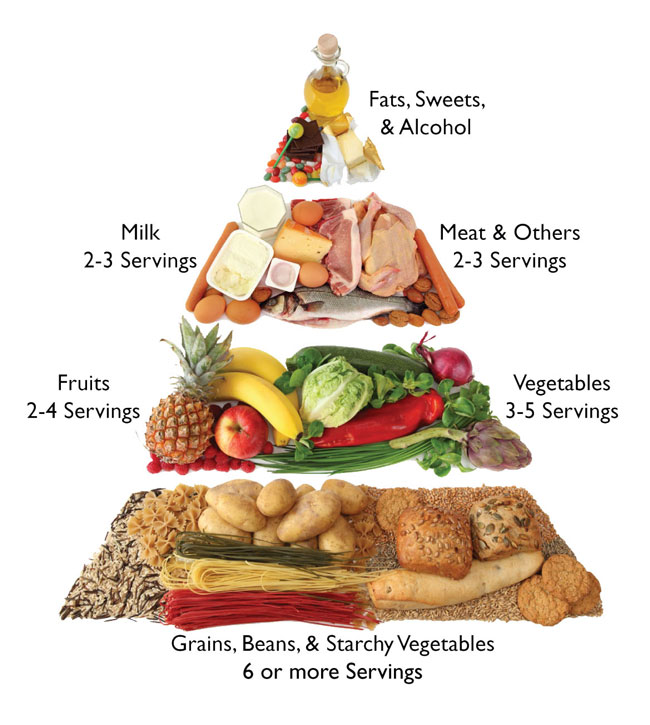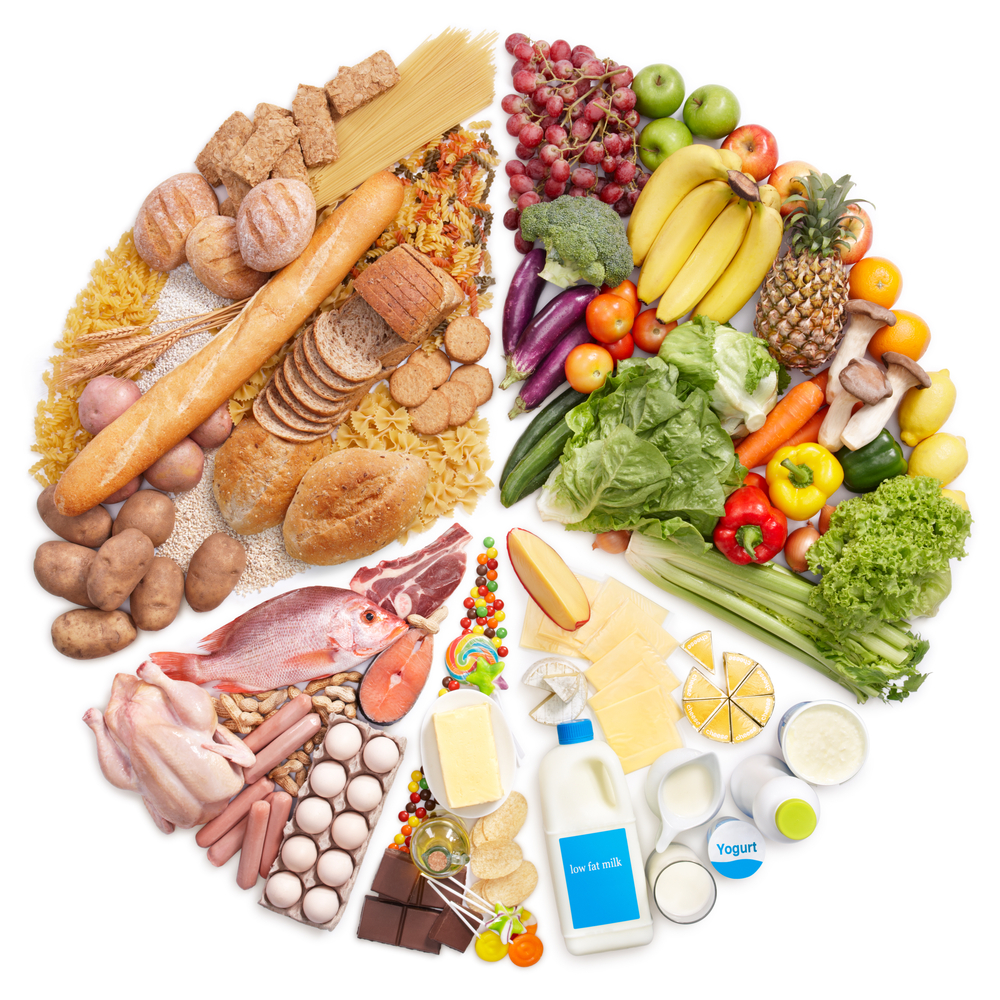Foods 2030 Lessons
Healthy Eating
ENERGY INTAKE
A calorie/kilojoule is a measure of the amount of potential energy contained in food. [Kilojoule (kJ) is the metric unit which replaces Calorie (kcal) and 4.184 kJ = 1 kcal]. The parts of your diet that your body can derive energy from are protein (4 kcal/17kJ), fat (9 kcal/37kJ), carbohydrate (4 kcal/17kJ) and alcohol (7 kcal/29kL) per gram. All have other functions in the body, except alcohol. Carbohydrate is the most efficient source of energy and protein is the least. These nutrients are found throughout the food groups and following the guidelines for Canada’s Food Guide will ensure the correct proportion of each will be available to your body.
It is recommended that of your total food intake approximately:
- 20% of the calories should come from protein,
- less than 30% from fat and
- 50-55% from carbohydrate.
For example, if Judy consumes about 2200 Calories per day:
440 Calories (20% of 2200) should be from protein, less than 600 Calories (30% of 2200) from fat and 1100 - 1210 Calories (50-55% of 2200) from carbohydrate. This translates to 110g of protein, less than 66g of fat and 275 - 302g of carbohydrate.
Jake calculated that in his diet he had 150g protein, 117g of fat and 300g carbohydrate. Do Jake’s figures fit the recommendations above?
|
|
grams |
Convert g to kcal |
Calories |
Total Calories |
Jake’s % of total |
Recommendations |
|
protein |
150 |
x 4 |
600 |
|
25 |
20 |
|
fat |
117 |
x 9 |
1050 |
3000 |
35 |
>30 |
|
carbohydrate |
300 |
x 4 |
1200 |
|
40 |
50-55 |
No. Jake should eat less protein and fat and more carbohydrate. To help Jake meet the recommendations you would do a 3 day food record to determine his selection of food groups. Probably he would need to select more Vegetables, Fruits and Grain Products (carbohydrate) and less Meat, Alternates and Milk Products (fat and protein).
APPROXIMATE DAILY RECOMMENDED CALORIE INTAKE
|
AGE |
GENDER |
RECOMMENDED NUMBER OF CALORIES FOR NORMAL ACTIVITY |
|
11 - 12 years |
MALE FEMALE |
2800 2400 |
|
13 - 15 years |
MALE FEMALE |
2800 2200 |
|
16 - 18 years |
MALE |
3200 |
|
|
FEMALE |
2100 |
|
19 - 35 years |
MALE |
3000 |
|
|
FEMALE |
2100 |
|
36-50 years |
MALE |
2700 |
|
|
FEMALE |
1900 |
FUNCTIONS OF MAIN NUTRIENTS
|
Nutrient |
Milk Products |
Grain Products |
Vegetables & Fruits |
Meat & Alternates
|
Function |
|
Carbohydrate |
|
√ |
√ |
|
|
|
Fat |
√ |
|
|
√ |
|
|
Protein |
√ |
√ |
|
√ |
|
|
Vitamin A |
√ |
|
√ |
√ |
|
|
Thiamine |
|
√ |
√ |
√ |
|
|
Riboflavin |
√ |
√ |
|
√ |
|
|
Niacin |
|
√ |
|
√ |
|
|
Folic Acid |
|
|
√ |
√ |
|
|
Vitamin B12 |
√ |
|
|
√ |
|
|
Vitamin C |
|
|
√ |
|
|
|
Vitamin D |
√ |
|
|
|
|
|
Calcium |
√ |
|
|
|
|
|
Iron |
|
√ |
√ |
√ |
|
|
Fibre |
|
√ |
√ |
|
|